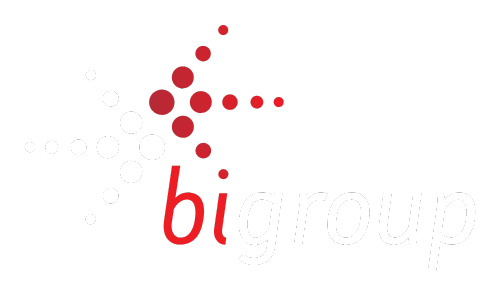The rise of agentic AI systems is reshaping the technological landscape. These AI models are capable of reasoning, planning, and executing complex tasks with minimal human oversight. Their integration into software engineering, robotics, and research opens new possibilities for automation, efficiency, and decision-making. However, these advancements also present serious challenges related to safety, transparency, and accountability.
In response to this evolving trend, researchers at the Massachusetts Institute of Technology (MIT) have introduced the AI Agent Index, the first public database that documents deployed agentic AI systems. The index provides invaluable insights into the technical design, application domains, and risk management practices of AI-driven agents. This is a crucial development for policymakers, businesses, and researchers seeking to understand how agentic AI is being developed, tested, and deployed.
This article explores the key findings of the AI Agent Index and their implications for responsible AI, governance, and risk management. It will also highlight what businesses, regulators, and the broader AI community must do to ensure agentic AI remains ethical, transparent, and aligned with human values.
Key Findings from the AI Agent Index
The AI Agent Index categorises AI agents based on their level of autonomy and decision-making capabilities. These categories help distinguish between different types of AI systems and their reliance on human intervention:
- Lower-Level Agents (Human-Guided Execution) Many AI systems in this category function primarily as processors, routers, or tool-callers. While they automate specific tasks, they still require human-defined constraints and oversight to operate effectively.
- Mid-Level Agents (Adaptive Automation) These systems demonstrate the ability to refine execution iteratively. They engage in multi-step planning and contextual adaptation, making them particularly useful in software development, cybersecurity, and decision-support applications. Unlike lower-level agents, these models can make certain adjustments autonomously.
- Higher-Level Agents (Toward Autonomy) Some systems are pushing the boundaries of autonomy by integrating sophisticated reasoning and long-term planning. However, full autonomy remains largely theoretical due to significant technical, ethical, and safety concerns. The potential for unintended consequences and misaligned objectives underscores the importance of careful oversight and regulation.
The AI Agent Index currently includes 67 agentic AI systems, each documented with an agent card that provides detailed information on:
- Technical components, such as the base model, reasoning implementation, tool use, and planning strategies.
- Application domains, covering software engineering, research, robotics, and universal computing.
- Risk management practices, including internal safety measures, external evaluations, and red-teaming exercises.
These categories help create a structured framework for understanding agentic AI and its implications for business, policy, and ethical considerations.
Transparency Concerns in AI Agent Safety
A major concern highlighted by the AI Agent Index is the lack of transparency in AI safety practices. The findings indicate that:
- Only 19.4 percent of AI systems disclose a formal safety policy. This means the majority of AI systems do not publicly outline their approach to risk management.
- Less than 10 percent report undergoing external safety evaluations. Without independent oversight, it is difficult to determine the reliability and robustness of these AI systems.
- Many agentic systems lack clear documentation on how they mitigate risks, prevent adversarial attacks, or handle unintended consequences.
This absence of transparency is alarming. Without clear disclosure of safety measures, risk mitigation strategies, and external evaluations, it becomes nearly impossible to ensure accountability. As these systems become more prevalent in critical industries such as finance, healthcare, and defence, organisations must prioritise transparency and governance.
Challenges in AI Safety and Transparency
The AI Agent Index findings point to several pressing challenges that must be addressed to ensure responsible AI governance:
1. Absence of Standardised Evaluation Frameworks
There is currently no universal standard for evaluating the safety, robustness, and ethical implications of agentic AI. Each organisation defines its own internal benchmarks, leading to inconsistencies in safety assessments, bias evaluations, and risk mitigation strategies.
Without a structured framework, companies deploying agentic AI systems are left to interpret governance requirements independently. This can result in uneven adoption of best practices and a lack of uniform safety measures across industries.
2. Opaque Risk Management Practices
Many AI developers fail to disclose internal testing procedures, external audits, or red-teaming results. This opacity makes it difficult to assess how well these systems handle:
- Unintended consequences and failure modes
- Adversarial attacks and security vulnerabilities
- Biases in decision-making and ethical risks
The lack of disclosure creates uncertainty about the reliability, fairness, and security of agentic AI models. Policymakers and regulators must step in to enforce stricter transparency standards.
3. Dominance of AI Development by a Few Large Corporations
The index reveals that a significant portion of agentic AI systems is being developed by a small group of technology companies, primarily in the United States. This raises concerns about the centralisation of AI governance and control, as well as the potential risks of proprietary models operating without sufficient external scrutiny.
If AI development is monopolised by a few corporations, there is an increased risk of market manipulation, reduced competition, and insufficient public oversight. To counteract this, there must be a stronger push for open-source AI research, transparent AI policies, and collaborative governance efforts.
What Needs to Happen Next?
To address these issues, businesses, regulators, and AI practitioners must take proactive steps to ensure responsible AI governance:
1. Implementation of AI Risk Audits and Governance Frameworks
Independent audits should be conducted to evaluate the bias, security risks, and ethical implications of agentic AI models. These audits should include real-world stress testing, adversarial robustness assessments, and ethical impact evaluations.
Governance frameworks must be adopted to ensure AI models adhere to best practices in fairness, explainability, and accountability.
2. Mandating AI System Transparency Requirements
Regulatory bodies must require AI developers to disclose safety policies, decision-making processes, and risk mitigation strategies. AI models that operate with self-adaptation and minimal human intervention should not be exempt from compliance, accountability, and external evaluation.
3. Strengthening International Collaboration on AI Governance
AI governance should not be the responsibility of a single country or organisation. Governments, academic institutions, and industry leaders must work together to establish global AI governance standards. International collaboration can help align policies and prevent regulatory gaps that could lead to exploitation or unethical AI deployment.
The MIT AI Agent Index serves as a wake-up call for businesses, policymakers, and AI researchers. As agentic AI systems continue to evolve, governance frameworks must evolve alongside them. The index has exposed critical gaps in AI safety, transparency, and ethical accountability, reinforcing the need for proactive governance measures.
To build trustworthy AI, businesses must go beyond compliance. They must embrace full transparency, rigorous safety assessments, and responsible AI practices to ensure that AI serves humanity rather than creating risks that are not properly managed.
📩 Are you deploying AI in your organisation? BI Group Australia specialises in AI governance, compliance, and risk management solutions. Contact us to discuss how we can help you navigate the complexities of responsible AI development.

